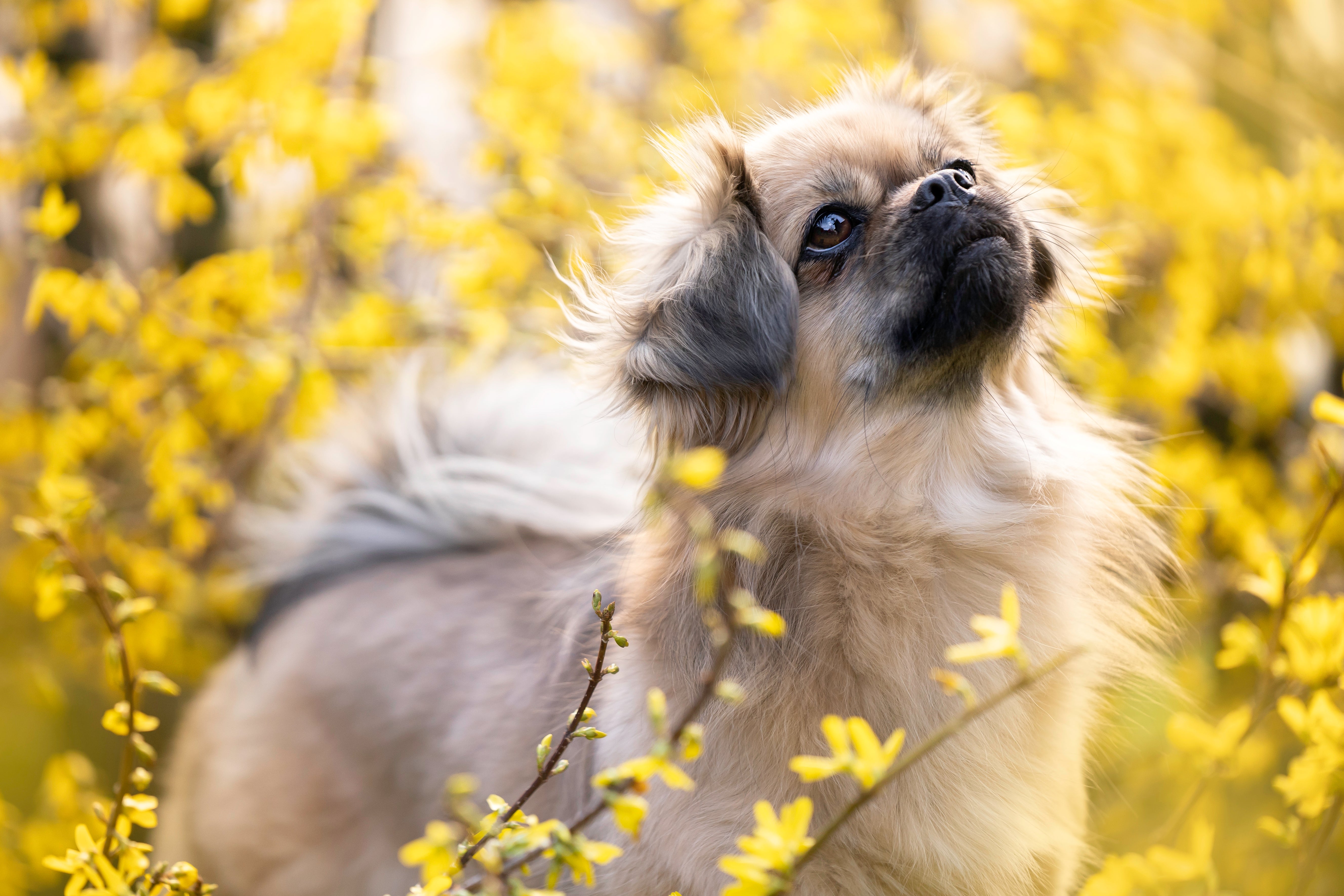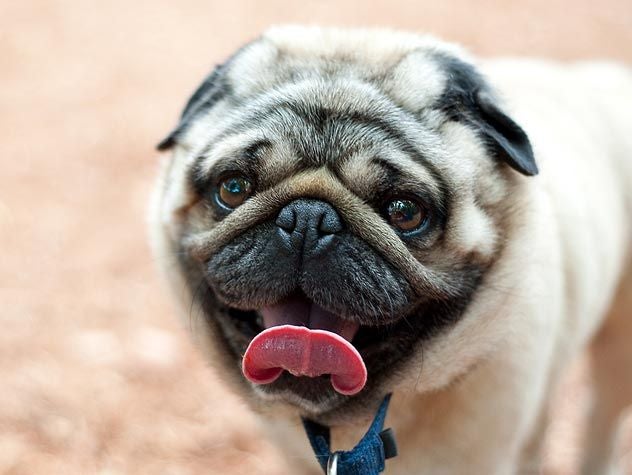Tibetan Spaniel
Like little pint-sized lions, the Tibetan Spaniel is longer than it is tall. They are bouncy and move quickly, with wide eyes that give them an expressive face. A double flat-lying, silky overcoat, feathered toes, and curved tail give them a distinctive look.
Breed characteristics carousel
Learn More
Need to Know
- Dog suitable for owners with some experience
- Basic training required
- Generally healthy breed
- Enjoys active walks
- Small dog
- Some drool
- Requires frequent grooming
- Chatty and vocal dog
- Barks and alerts to visitors/anything unusual
- Generally friendly with other dogs
- Gets along with other pets with training
- May need additional supervision to live with children
- Needs a small yard or can happily live in the city
- Can be left alone occasionally with training
- AKC Registered Breed

Personality
Bold and often stubborn, the Tibetan Spaniel dog is an independent thinker with a sensitive side. They are generally very happy and enjoy being with their families, whether on outings or just curled up on the couch. They get along well with other dogs but can be aloof with strangers.
The Lamaist form of Buddhism holds the lion in the highest regard and in turn the little lion-like dogs they kept in their monasteries. The dogs sat on the monastery walls, looking out for strangers or wolves. They were also prayer dogs, turning prayer wheels.
The first Tibetan Spaniel dog came to England in the late 1800s but was largely unknown worldwide until the early 20th century. They came to America in the 1960s.
Vigilant watchdogs, the Tibetan Spaniel understands the assignment, always alerting and watching. Even with good socialization and training, they can still retain these instincts. Ideal owners will understand that this is ingrained in them and will be able to teach them basic manners. Owners will need to be engaging, understanding of high grooming needs, and be home most of the time as they can suffer from separation anxiety.
Physical activity, puzzle solving, clicker training, and more enrichment will tire the Tibetan Spaniel breed. They are expert diggers, so you’ll want a completely dog-proofed, fenced-in yard.
These small dogs do fine in small spaces, but owners will need to consider how close their neighbors are as they do bark to alert. Tibetan Spaniels might be stressed by constant noise, so city life might not be enjoyable for owners, dogs, or neighbors.
Tibetan Spaniel dogs have a double coat with a dense undercoat and a longer, silky topcoat. Brushing and combing through the coat frequently will help with tangles and mats. Pay attention to the feathering in particular.
These pint-sized pups love training and spending time with their owners for a one-two punch. Positive reinforcement is best for Tibetan Spaniels. They’ll excel at tracking, agility, and more.
Sweet and loving, the gentle Tibetan Spaniel can make an excellent family pet for families who are willing to tolerate potentially excessive barking and who are home most of the time. Small children should be taught boundaries with these tiny dogs.
The cost of a Tibetan Spaniel from a breeder is significantly more than the cost of adopting one from a local shelter or rescue. The adoption fee usually covers additional items such as spaying or neutering, vaccines, and microchipping.

Learn more about feeding and caring for your Tibetan Spaniel on Purina.
Did You Know?
- Tibetan Spaniels might be the ancestors of the Pekingese and the Lhasa Apso.
- They are often called “little lion dogs.”
- The Tibetan Spaniel breed was used as a prayer companion dog, sitting next to Tibetan monks.

